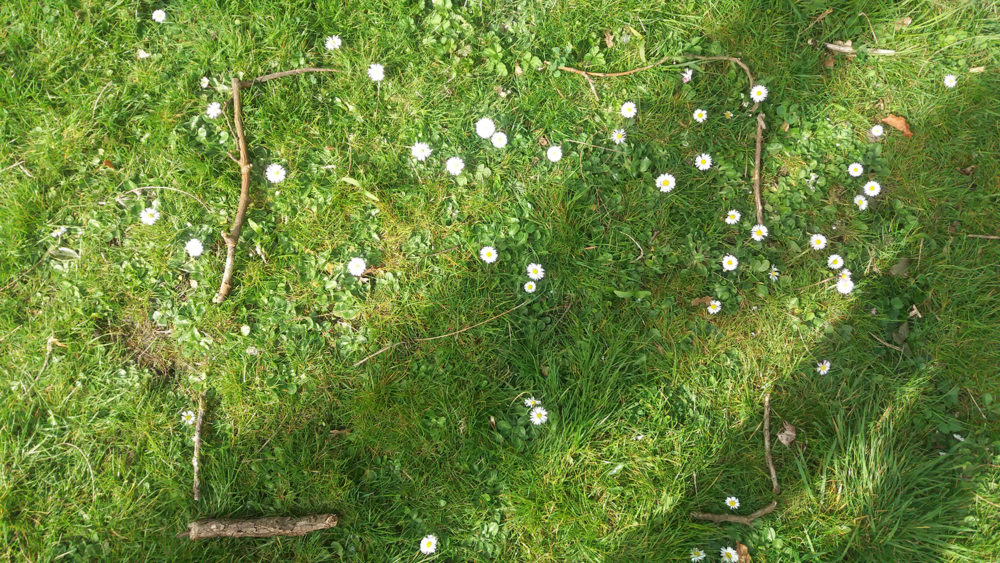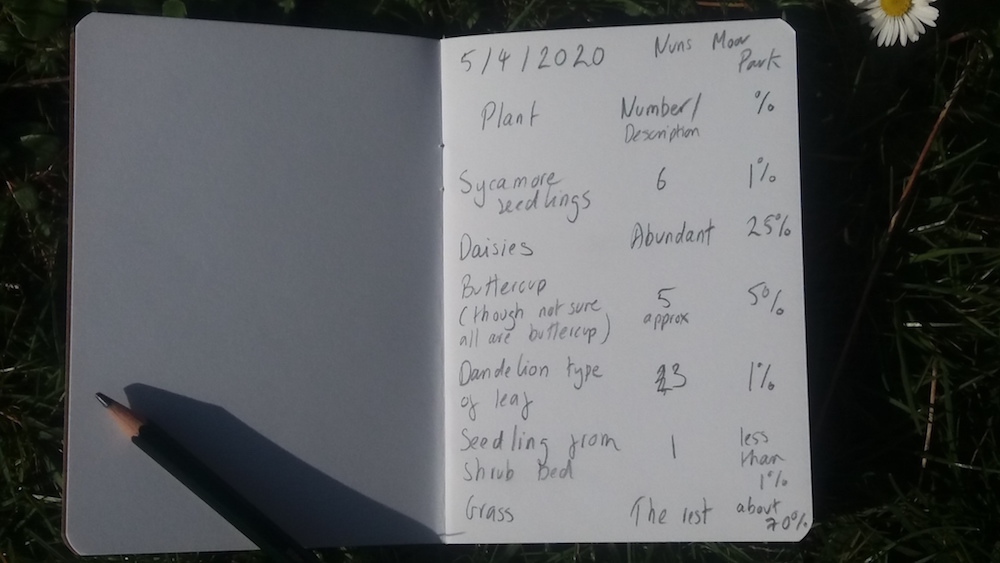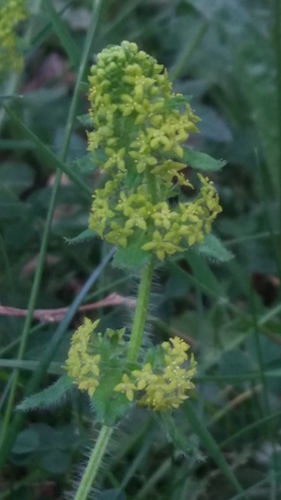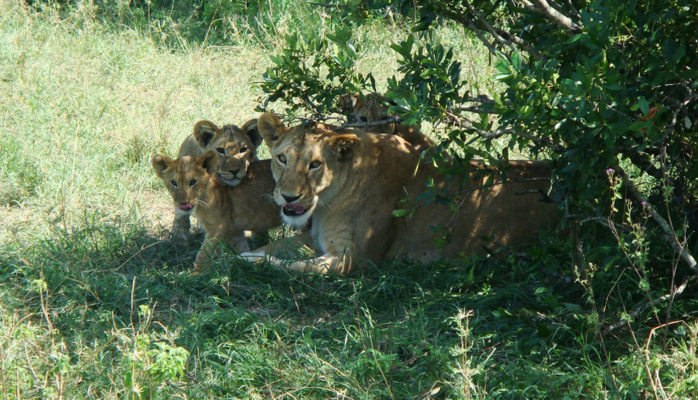1000 David Attenboroughs – Weeks 9 & 10
Plant Surveying and Biodiversity
Find a patch of grass.
With some sticks mark out roughly a metre square.

Look closely at what you can see in the square. Many of the things, especially if it is short grass, will be very hard to identify, so name what you can e.g. daisy and make up a name for the others. I used the name dandelion type leaf and grass (grasses are very hard to identify).
Then work out very approximately what percentage the plant covers, or if you want to start training as a plant surveyor 😊 then use the DAFOR scale. Writing down whether a plant is Dominant/Abundant/Frequent/Occasional/Rare
When I did this I had forgotten the words to use, see field notes photo!

If your square has 100% of one plant then the species diversity is low (each different type of plant is a species). If it had a 100 different types of plants each taking up 1% of the space it would have very, very high species diversity. Another name for this is biodiversity.
Biodiversity on our earth is declining rapidly due to human activities and we need to reverse this process. We can make a small contribution to this by making our parks, green spaces and gardens more biodiverse.
One way we can do this is to allow grass to grow long during spring and summer. I stopped a verge being cut by the Council in Spital Tongues a month ago, and now it is full of flowers. (The yellow flower in the photo is Crosswort.) Could you leave a bit of your lawn or school playing field to grow?

Useful links
https://www.globalissues.org/article/170/why-is-biodiversity-important-who-cares
http://www.botanicalkeys.co.uk/northumbria/dafor.asp
Feature pic of lioness and cubs “Cottars3” by Sam.Romilly, licensed under CC BY 2.0 CC
RH

